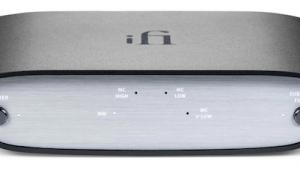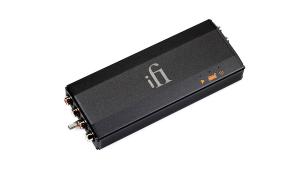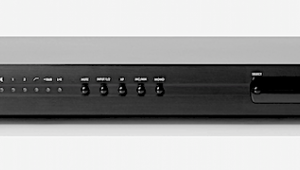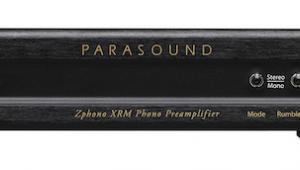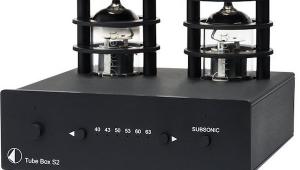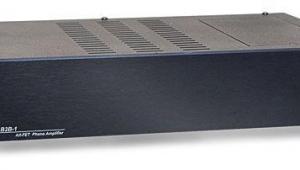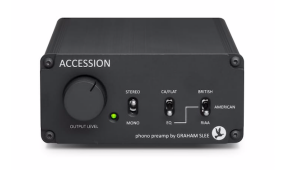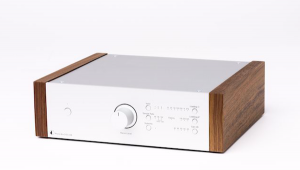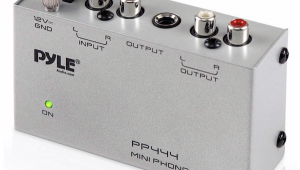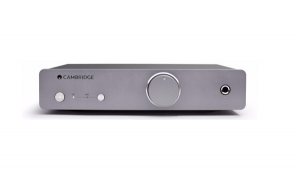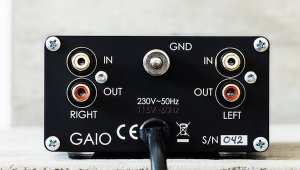Herron Audio VTSP-1 preamplifier & VTPH-1MC phono preamplifier Page 3
Listening: VTSP-1 preamplifier
The VTSP-1 is easy to set up and use---its switch-controlled AC polarity inversion is particularly convenient in minimizing hum---and sounded sweet yet detailed right out of the box, with no trace of glare, edge, or grain. Both the volume and balance controls were silky-smooth to the touch, while the selector switch had a solid, reassuring feel---as if I could switch among sources for decades and nothing would wear out.
However, my review sample exhibited an output problem that forced me to rotate the balance control to 10 o'clock to get proper imaging with all sources. A second sample had perfect channel balance. The problem turned out to be unusual: a failed capacitor. But then, my Ayre K-1 went down recently with a failed resistor, of all things.
Ideally, an active line stage should perform like that reigning cliché of audio, "a straight wire with gain": nothing added, nothing removed. Using the Enlightened Audio Design DSP 9000 Mk.3 D/A converter's built-in digital/analog stepped-attenuator volume control---it uses a single 0.1% Vishay resistor at its 0, -6, and -12dB positions, where there is full resolution and no digital attenuation---I was able to easily compare the sound of the D/A "direct out" and through the VTSP-1's tubed circuitry.
First off, the VTSP-1 was dead quiet even when cranked up---like the Audible Illusions Modulus 3A, which also uses 6922s (a pair in the gain stage). When you first turn up the volume, the sound goes from "off" to "on" in a discrete step---something you'd expect with physically stepped attenuators, but not an action that moves so smoothly. This first step was, as Herron had promised, very gradual. With 142 possible steps (128 in the attenuator, and 14 more added by Herron's "downshifting" switcher), the control operates like a conventional potentiometer, with a real-world-friendly taper, and none of the clicks and clunks of conventional stepped attenuators.
Before A/B'ing the EAD and Herron, I sat down to listen to some familiar reference CDs: Joni Mitchell's Blue (DCC Compact Classics reissue), Tiger Okoshi's Color of Soil (JVC XRCD), Byron Janis's performances of Liszt's Piano Concertos 1 and 2 (Mercury, 35mm tape recordings), and singer/songwriter Tom Freund's beautifully recorded and seriously underappreciated melancholic gem, North American Lost Weekend (Red Ant). Because the VTSP-1 inverts absolute polarity, I ran the EAD with its absolute polarity inverted.
Tonally, the Herron's performance was impressively neutral from the lower midrange on up---particularly on top, where it sounded liquid and effortlessly open and natural, yet extended---with perhaps a tad more liquidity and less sparkle than I was used to from the Ayre K-1. Bass extension and control were impressive, though low-frequency definition and dynamics seemed slightly softened compared to the K-1. The mids were what I hope for and expect from tube gear: harmonically rich and full-bodied, but not artificially "bloomy" or overly lush. Most important, the tonal presentation held together, creating a fundamentally seamless picture.
Whether an audio component is involving or boring, or grates on nerves and ears, depends on how well it organizes the sound. Its capabilities of rhythm, pacing, and timing will either bring music to life and compel you to listen, or create discomfort, confusion, and/or boredom---any of which will make you want to click on the television for some entertainment.
The VTSP-1 is an organized preamplifier. It offers impressively well-focused, three-dimensional images on appropriately sized soundstages. More important, it doesn't mess with the timing of the music compared to my reference preamp, or to the EAD run directly into the amplifiers. And with the Herron's ultra-low noise floor and dead-silent background, I didn't think it hid any of the fine detail found on the recordings I chose.
Running the EAD directly to the amplifiers and listening to the same CDs again (with absolute polarity not reversed), I found that, tonally, the VTSP-1 was very close to a "straight wire with gain"---except at the frequency extremes. On top it added a slight bit of pleasing liquidity not found in the straight pass-through. It did subtract slightly from the leading edges of transients, but in no way did it choke off atmosphere and air. On the bottom, it slightly softened the attack of bass notes. But top and bottom were fully there, not rolled-off.
Otherwise, I felt the VTSP-1 was essentially close to transparent to the source---especially in terms of adding no haze, grunge, or gauze. It let music through with an utterly natural and relaxed feel. Its spatial and dynamic performances were equally translucent. Overall, I felt that listening to the EAD through the Herron preamp instead of through the EAD's outputs did not compromise the music in any meaningful way. But if you feel your system needs greater transient speed, more etch, better bass focus, and greater bass dynamics, you may be better off looking elsewhere.
- Log in or register to post comments





